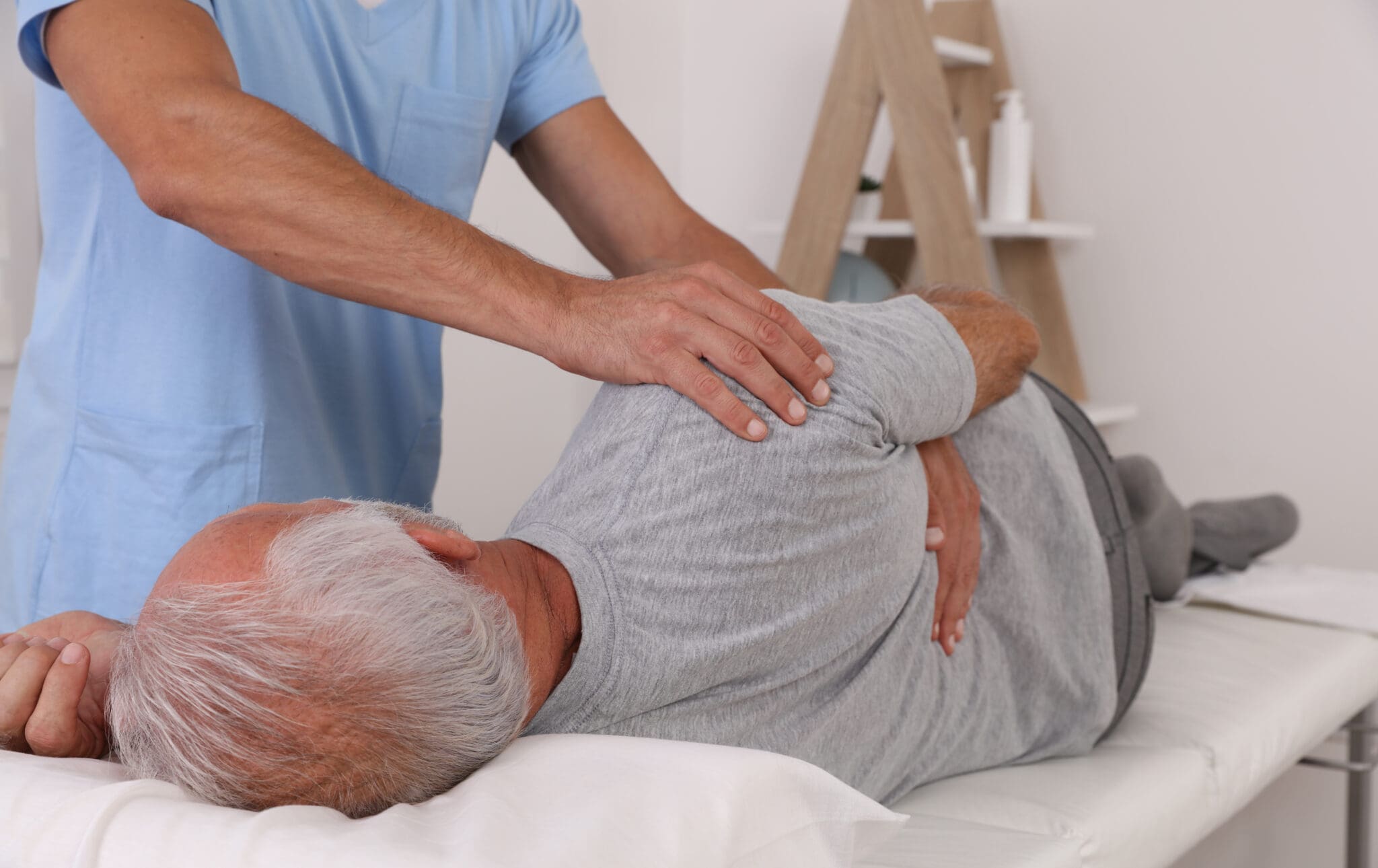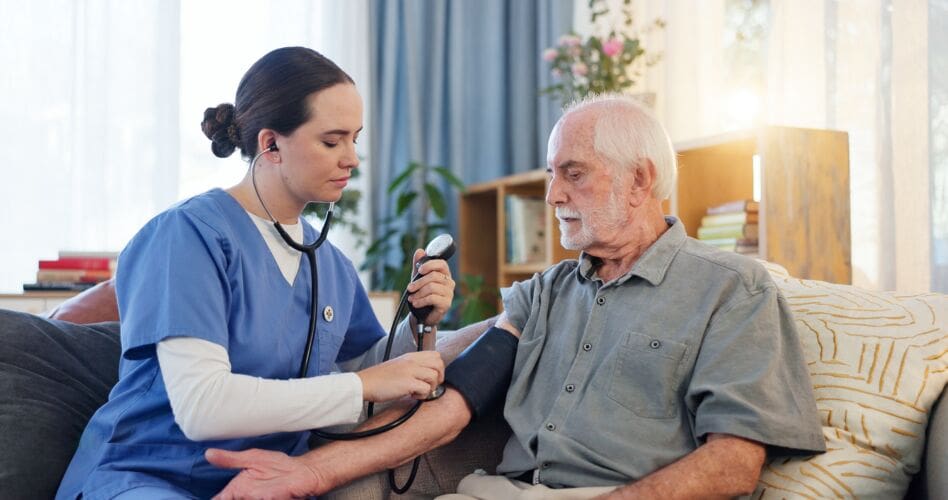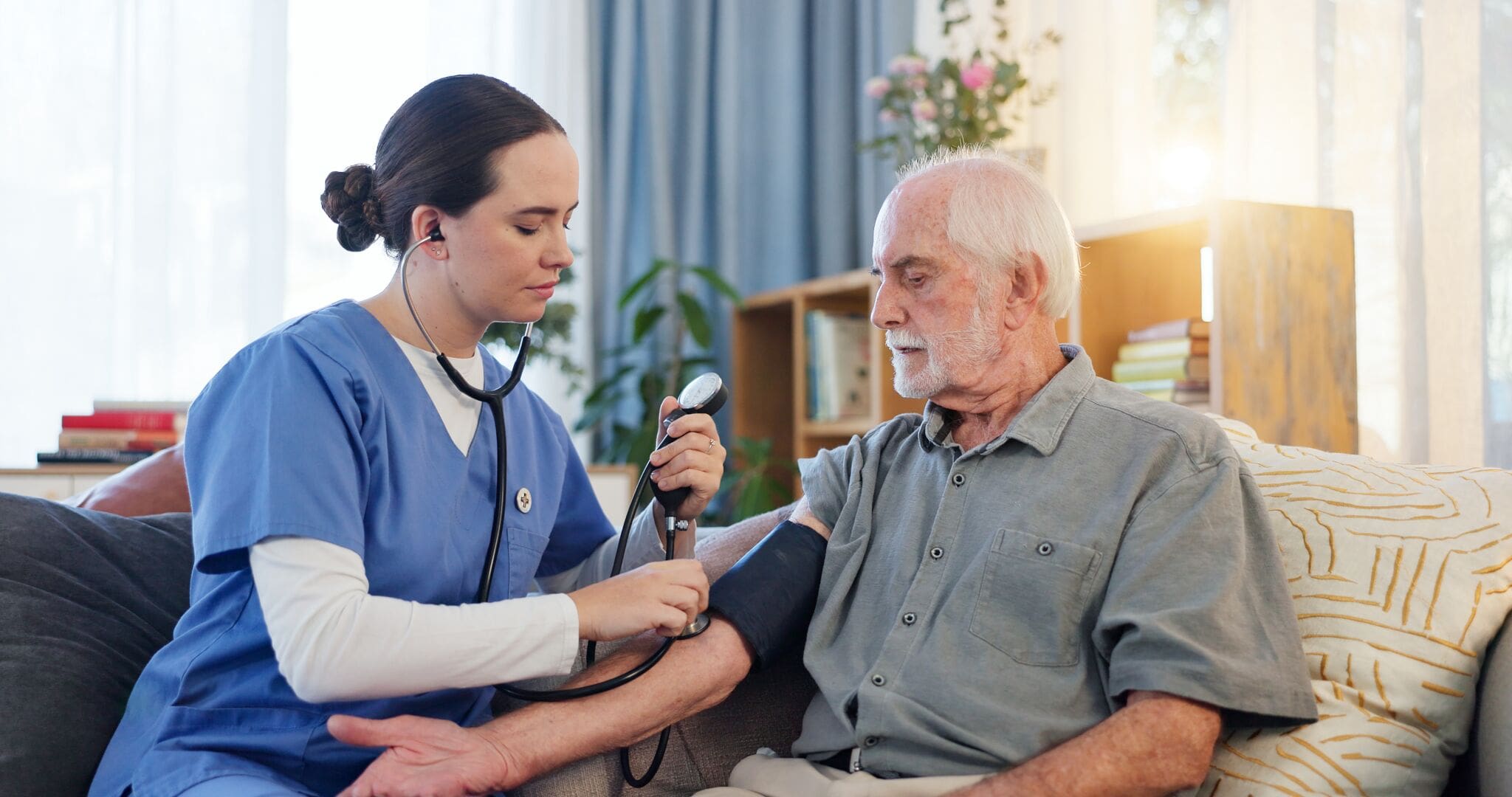In this article
Pressure ulcers, sometimes known as bedsores or pressure sores, are a significant concern for anyone involved in caring for individuals with reduced mobility. They are not only painful and distressing for the individual, but can also lead to severe medical complications if not identified and managed effectively.
Central to the successful treatment and prevention of these wounds is the use of an internationally recognised grading system. This enables health and social care professionals across the UK to assess the severity of ulcers, plan appropriate interventions, and monitor wound healing.
In this guide, you’ll find a thorough explanation of what pressure ulcers are, the grading systems in use, their practical implications, and what carers and clinicians can do to protect vulnerable people from this avoidable harm.
What Are Pressure Ulcers?
Pressure ulcers are injuries that occur when prolonged pressure, or pressure combined with friction and shear, interrupts blood supply to the skin and underlying tissues. This leads to localised damage and, in severe cases, the death of skin and muscle cells.
These ulcers most commonly develop over bony prominences, such as the sacrum, heels, hips, elbows, and back of the head, where the cushioning of muscle and fat is limited and the effects of pressure are most pronounced. While these wounds can develop anywhere, they are especially likely in individuals who are unable to change position independently, such as patients in hospital beds, care home residents, or people with spinal cord injuries.
The seriousness of pressure ulcers is often underestimated, but they are associated with a range of health problems, including pain, infection, loss of function, and, in the most severe cases, sepsis or death. Preventing pressure ulcers requires a multi-faceted approach that includes regular assessment, targeted prevention strategies, and prompt, effective treatment when early signs appear.
Common Causes and Risk Factors
At the root of every pressure ulcer is unrelieved pressure. When someone is unable to move (whether due to unconsciousness, illness, immobility, or frailty), the weight of their body presses down on the same area of skin for an extended period, squeezing the tiny blood vessels that supply oxygen and nutrients to tissues. Without adequate blood flow, the skin and underlying structures begin to die.
Shear, which occurs when the skin moves in one direction and the underlying bone moves in another (such as when sliding down a bed), and friction from repetitive rubbing, can also contribute to the development and worsening of ulcers.
Risk factors are numerous and include immobility due to illness or disability, advanced age, poor nutrition and hydration, incontinence, loss of sensation, and medical conditions that impair circulation or skin integrity. People with neurological disorders, diabetes, or vascular diseases are at particularly high risk, as are those who are very underweight or obese. Early identification of at-risk individuals through thorough assessment is critical, as timely preventive action can halt the progression from redness to open wounds.

Why Grading Pressure Ulcers Matters
Accurately grading pressure ulcers is vital not only for guiding immediate care but also for monitoring wound healing and evaluating the effectiveness of interventions. In clinical settings across the UK, the grading system provides a common language, ensuring all members of the multidisciplinary team understand the stage of injury and what needs to be done. Without clear grading, ulcers can be under- or over-treated, leading to poorer outcomes for patients and potentially legal consequences for care providers.
The grade of a pressure ulcer helps determine the urgency and type of treatment, the resources needed, and the risk of complications such as infection or tissue necrosis. It also influences decisions about whether specialist input is required and whether safeguarding or incident reporting procedures should be triggered. On a wider scale, pressure ulcer grading data are used for audits and quality improvement across the NHS and social care sector, forming an important indicator of care standards.
Overview of the NHS and EPUAP Grading Systems
Within the UK, the most widely used system for classifying pressure ulcers is based on guidance from the European Pressure Ulcer Advisory Panel (EPUAP), which aligns with the standards set by NHS England. This system categorises pressure ulcers into four main grades (or stages), based on the depth and extent of tissue injury, along with two additional categories: unstageable ulcers and suspected deep tissue injury. This internationally agreed approach ensures consistency, supports research, and enables meaningful comparison of data across different healthcare settings.
The stages range from Grade 1, which is the mildest and most easily reversed, through to Grade 4, which represents the most severe, life-threatening wounds involving deep tissue destruction. Unstageable ulcers and suspected deep tissue injury are recognised as distinct categories because the extent of damage cannot be immediately determined, usually due to the presence of dead tissue or the subtlety of underlying injury. Correct use of this grading system is a mandatory skill for anyone assessing skin integrity in clinical or care settings.
Grade 1: Non-Blanchable Redness
A Grade 1 pressure ulcer is defined by persistent redness of intact skin, which does not fade (or “blanch”) when gentle pressure is applied. In individuals with darker skin, this area may appear as persistent discolouration, such as blue or purple tones, alongside changes in local temperature, firmness, or pain. Although the skin has not yet broken, the affected area may feel warmer or firmer than the surrounding tissue.
This stage is the earliest warning sign that tissue damage is occurring. If identified promptly, it can usually be reversed with simple interventions such as relieving pressure, improving skin hygiene, and optimising nutrition and hydration. If action is not taken at this stage, however, the risk of progression to more serious ulceration increases rapidly.
Grade 2: Partial-Thickness Skin Loss
At Grade 2, there is partial loss of the skin’s outer layers (epidermis and/or dermis), presenting as a shallow, open wound with a pink or red wound bed. Sometimes, a Grade 2 ulcer will appear as an intact or ruptured blister. Importantly, there is no exposure of deeper tissues such as fat, muscle, or bone. This grade signals a break in the skin and an increased risk of pain, infection, and further deterioration if not managed promptly.
Treatment at this stage involves not only relieving pressure but also creating a moist wound environment to support healing, protecting the area from further trauma or contamination, and careful monitoring for signs of infection or deterioration. Grade 2 ulcers usually heal with appropriate intervention but may require more intensive wound care than Grade 1.
Grade 3: Full-Thickness Tissue Loss
A Grade 3 pressure ulcer represents full-thickness loss of the skin, with damage extending through the dermis into the subcutaneous (fatty) tissue. The wound bed may be deep, and subcutaneous fat may be visible, but there is no exposure of bone, tendon, or muscle. The depth of a Grade 3 ulcer can vary depending on the location on the body and the person’s body habitus; for example, ulcers over the sacrum or buttocks may be particularly deep due to the abundance of fatty tissue.
Grade 3 ulcers are serious and associated with a high risk of complications, including infection, tissue necrosis, and delayed healing. Treatment requires multidisciplinary input, including the expertise of tissue viability specialists, careful selection of wound cleansing and dressing, and management of any underlying health issues that may be slowing healing, such as poor nutrition or poorly controlled diabetes.
Grade 4: Extensive Tissue Damage
Grade 4 is the most severe stage of pressure ulcer, indicating full-thickness tissue loss with extensive destruction. In these ulcers, muscle, tendon, or even bone may be exposed at the base of the wound. There may also be undermining of the surrounding tissue or tunnelling beneath the wound edges. This level of damage carries a very high risk of life-threatening infection, including osteomyelitis (infection of the bone) and sepsis.
Managing Grade 4 ulcers is highly complex, often involving surgical debridement of dead tissue, aggressive infection control measures, specialist wound care products, pain management, and input from a wide range of professionals, including surgeons, dietitians, and physiotherapists. Healing is usually prolonged and can result in significant scarring or loss of function, which is why prevention and early intervention are so critical.
Unstageable Ulcers: When Grading Is Not Possible
There are occasions when the true depth and extent of a pressure ulcer cannot be determined at the time of assessment. These unstageable ulcers are covered by slough (yellow, tan, or green) or necrotic (black/dead) tissue, which obscures the base of the wound and makes accurate grading impossible until the material is removed or cleared through specialist wound care. Unstageable ulcers are always treated as potentially serious, as it is likely that significant underlying damage is present.
In clinical practice, unstageable ulcers necessitate prompt referral to a tissue viability specialist and may require surgical or enzymatic debridement to expose the true wound bed and allow for accurate grading and care planning. Infection control, pain management, and ongoing reassessment are essential during this process.
Suspected Deep Tissue Injury (sDTI)
Suspected Deep Tissue Injury is a relatively new category in pressure ulcer classification, included to highlight injuries where the skin is intact but there is a suspicion of significant underlying damage. The area may appear as a localised purple or maroon area of discoloured skin or a blood-filled blister, often caused by combined pressure and shear forces. The true depth and extent of injury may only become clear as the wound evolves.
Deep tissue injuries are dangerous because they can rapidly deteriorate and expose deeper structures with little warning. Immediate offloading of pressure, frequent reassessment, and involvement of wound care specialists are necessary to prevent further deterioration. In individuals with darker skin tones, these changes may be harder to spot, making vigilance and education for all care staff particularly important.
Photographic Examples and Descriptions
Photographic documentation plays an invaluable role in pressure ulcer assessment, not only supporting accurate grading but also providing a record for monitoring progress and communicating with multidisciplinary teams. In the NHS, photographs of wounds are taken with the patient’s consent and stored securely as part of their medical records. Photographs are especially useful in tracking changes over time, supporting referrals to specialist services, and as a teaching tool for staff education and learning.
Each grade of pressure ulcer has characteristic visual features: Grade 1 typically shows an area of redness that does not blanch; Grade 2 displays a shallow open wound or blister; Grade 3 reveals a deeper wound, exposing subcutaneous fat; and Grade 4 exposes deeper structures, such as muscle or bone. Specialist wall charts and digital resources are available in most healthcare settings to aid staff in recognising and differentiating between grades.
Tools and Charts for Accurate Assessment
Assessment of pressure ulcers is supported by a variety of tools and reference charts in clinical practice. The EPUAP and NHS classification posters, available in wards and care homes, provide clear visual examples of each grade. Risk assessment instruments, such as the Waterlow and Braden Scales, help identify individuals at high risk of developing ulcers by considering mobility, nutrition, continence, and general health status. The SKIN bundle – a structured checklist focusing on Surface, Keep moving, Incontinence, and Nutrition – is widely used in the UK to guide regular skin inspection and prevention.
Digital photography, electronic wound care systems, and multidisciplinary team meetings all contribute to accurate, consistent assessment and planning. These resources are supported by ongoing staff education, with regular updates and audits to ensure best practice is maintained.

Recording and Reporting Requirements in the UK
Within the NHS and UK care sector, documentation of pressure ulcers is mandatory and tightly regulated. All pressure ulcers at Grade 2 and above must be recorded as clinical incidents and reported through systems such as Datix. This information is used to trigger reviews, support quality improvement initiatives, and fulfil legal and safeguarding responsibilities.
Documentation must include the location, size, depth, grade, and appearance of the ulcer, as well as the actions taken in response to the incident. Progress must be tracked with regular updates, including changes in grading, signs of infection, or deterioration. Multidisciplinary communication between nurses, doctors, tissue viability teams, and, where relevant, GPs or care home managers, is essential to ensure coordinated, effective care.
Care Planning and Treatment by Grade
Effective care planning for pressure ulcers must be individualised, reflecting the grade of ulcer and the holistic needs of the patient.
For individuals with Grade 1 and Grade 2 ulcers, interventions may focus on immediate pressure relief, enhanced nutrition, skin protection, and frequent monitoring to prevent further damage.
Wounds at Grade 3 or 4 require more intensive management, involving specialist dressings, debridement, infection control, and often the expertise of tissue viability nurses or surgical teams. Pain management and psychosocial support are crucial throughout, as living with pressure ulcers can be distressing and isolating.
Care plans should always respect the patient’s preferences, maintain dignity, and involve families or carers where appropriate. Regular reviews ensure that treatment remains effective and responsive to changes in the wound or the patient’s health.
Prevention Strategies and Repositioning Protocols
Prevention remains the most powerful tool in the fight against pressure ulcers. Regular repositioning (usually at least every two hours for those at risk) is a cornerstone of prevention, with staff using turning charts to document position changes. Pressure-relieving equipment, such as specialist mattresses and cushions, helps distribute weight and protect vulnerable areas.
Meticulous skin inspection, particularly over bony prominences, should be conducted daily or more often in high-risk patients. Managing moisture from incontinence or sweating is equally important; using barrier creams and maintaining good hygiene to protect skin integrity. Optimising nutrition and hydration supports healing and resilience, and all staff must be vigilant in spotting early warning signs.
Prevention strategies are most effective when everyone involved in a person’s care understands their role, is trained in risk assessment, and acts promptly when problems are identified.
Involving Patients and Carers in Ulcer Management
The best outcomes in pressure ulcer prevention and management are achieved when patients and carers are active partners in care. Education about risk factors, early warning signs, and the importance of regular movement and good nutrition empowers people to take an active role. Shared decision-making ensures that care plans align with the individual’s wishes and circumstances, promoting comfort and quality of life.
Patients and carers should be encouraged to report any discomfort, redness, or changes in the skin as soon as they are noticed. Open communication and supportive resources can reduce anxiety and foster a collaborative approach, making it easier to prevent ulcers or respond swiftly to any signs of deterioration.

Training and Competency for Healthcare Staff
Finally, high standards of care depend on the knowledge and competence of those delivering it. In the UK, all staff who care for individuals at risk of pressure ulcers, whether in hospitals, care homes, or the community, are required to undergo regular training in skin assessment, grading, and prevention. This includes the use of assessment tools, correct repositioning techniques, application of dressings, adherence to infection control procedures, and accurate documentation.
Competency is maintained through ongoing education, skills assessments, and access to tissue viability teams for specialist support. Clinical audits and feedback mechanisms help identify gaps and drive continuous improvement.
Pressure ulcers remain a major challenge in healthcare, but with accurate grading, vigilant assessment, and a proactive, collaborative approach, their impact can be significantly reduced. The EPUAP and NHS grading systems provide a foundation for safe, consistent, and effective care, supporting all those involved in the prevention and management of these avoidable wounds. By understanding the grading process and applying it rigorously, carers and professionals in the UK can ensure timely intervention, better healing, and a higher standard of dignity and comfort for all at risk.






